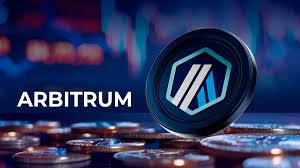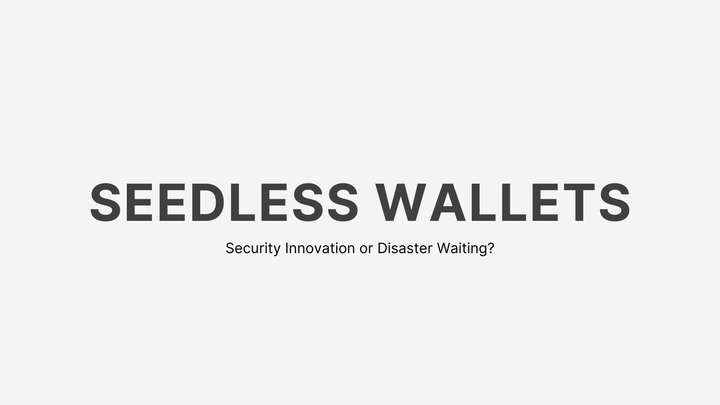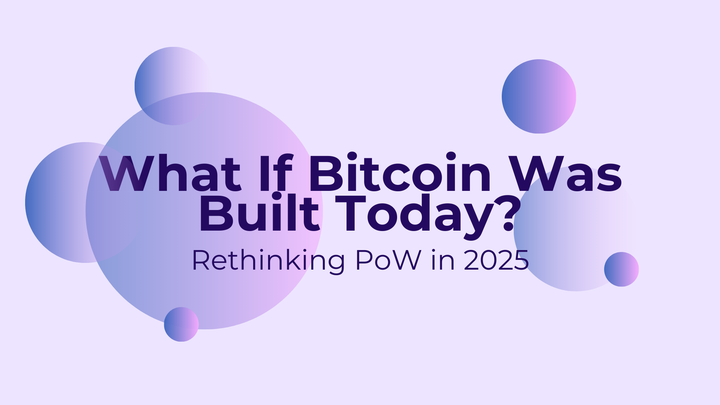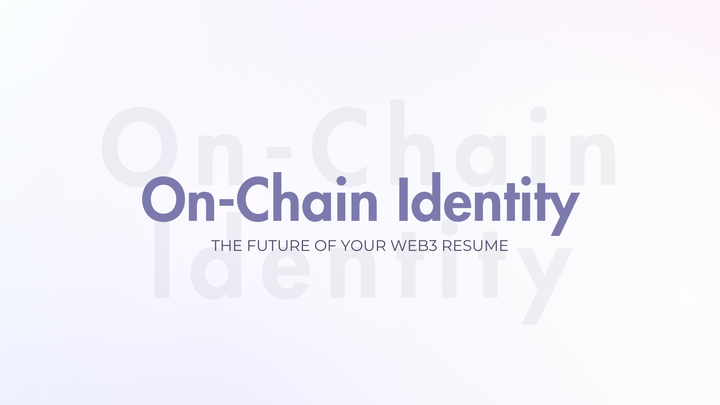Arbitrum: An Optimistic Roll-up Solution Enhancing Ethereum's Capabilities

Ethereum’s Scaling Challenges
Ethereum, the world's leading smart contract platform, has revolutionized decentralized applications (dApps) and finance (DeFI). However, its popularity has exposed a critical limitation: scalability. As of mid-2025, Ethereum processes around 15-30 transactions per second (TPS), a fraction of what centralized systems like Visa can handle (up to 24,000 TPS). High demand leads to network congestion, skyrocketing gas fees, and slower transaction confirmations, frustrating users and developers alike.
To address this, Ethereum has pursued a multi-pronged scaling strategy, with Layer 2 (L2) solutions at its core. Among these, Arbitrum stands out as a leading optimistic roll-up solution, designed to enhance Ethereum’s throughput while preserving its security and decentralization. This article dives deep into Arbitrum, exploring its technology, benefits, ecosystem, and role in Ethereum’s evolution, offering a comprehensive guide for enthusiasts, developers, and investors.
What is Arbitrum?
Arbitrum is an Ethereum Layer 2 scaling solution developed by Offchain Labs, a New York-based team founded in 2018 by Ed Felten, Steven Goldfeder, and Harry Kalodner. It uses optimistic roll-up technology to process transactions off-chain while leveraging Ethereum’s Layer 1 (L1) for security and finality. By batching thousands of transactions into a single roll-up block, Arbitrum reduces congestion on Ethereum’s mainnet, slashing gas fees and boosting throughput without compromising the network’s core principles.
Unlike other scaling solutions, such as sidechains or state channels, Arbitrum is tightly integrated with Ethereum, inheriting its security guarantees. It assumes transactions are valid (“optimistic”) unless disputed, minimizing the need for constant on-chain computation. This efficiency makes Arbitrum a cornerstone of Ethereum’s scaling roadmap, complementing upgrades like Ethereum’s Proof-of-Stake transition and sharding.
How Arbitrum Works: The Mechanics of Optimistic Roll-ups
The Basics of Roll-ups
Roll-ups are Layer 2 solutions that bundle (or “roll up”) multiple transactions into a single batch, which is then submitted to Ethereum’s mainnet. There are two types: zero-knowledge (ZK) roll-ups, which use cryptographic proofs to verify transactions, and optimistic roll-ups, like Arbitrum, which assume transactions are valid unless proven otherwise. Optimistic roll-ups prioritize lower computational overhead, making them cost-effective and easier to implement for general-purpose smart contracts.
Arbitrum’s Architecture
Arbitrum operates by executing transactions on a separate chain (the roll-up chain) while posting transaction data to Ethereum L1. Here’s a simplified breakdown of its process:
- Transaction Submission: Users send transactions to an Arbitrum sequencer, a centralized component that orders transactions for efficiency. The sequencer processes these off-chain in a virtual machine called the Arbitrum Virtual Machine (AVM), compatible with the Ethereum Virtual Machine (EVM).
- Batching and Compression: The sequencer batches transactions into a compressed roll-up block, which is submitted to Ethereum L1 as a single transaction. This data is stored in Ethereum’s calldata, ensuring availability for verification.
- Optimistic Assumption: Arbitrum assumes all transactions in the batch are valid. The roll-up block is posted to Ethereum with a bond from validators (or “asserters”), who stake ETH to back their claim.
- Challenge Period: A seven-day dispute window allows validators to challenge incorrect roll-up blocks. If a dispute arises, Arbitrum uses a dispute resolution protocol called interactive proving, where the challenger and asserter narrow down the disagreement to a single computation step, verified on-chain.
- Finality: If no disputes arise, the roll-up block is finalized on Ethereum, and transactions are considered settled. If a challenge proves fraud, the incorrect block is rejected, and the challenger is rewarded.
This optimistic approach minimizes on-chain computation, as disputes are rare, and most transactions settle without intervention. The result? Lower gas fees (often 10-100x cheaper than L1) and higher throughput (up to thousands of TPS).
Key Components
- Arbitrum Virtual Machine (AVM): A modified EVM that supports Ethereum-compatible smart contracts, allowing gasless transactions, and optimized execution.
- Sequencer: A centralized entity (for now) that orders transactions to reduce latency. Offchain Labs plans to decentralize the sequencer in future upgrades.
- Bridge Contracts: Smart contracts on Ethereum L1 that manage communication between L1 and Arbitrum’s L2, handling deposits, withdrawals, and data availability.
Why Arbitrum? Benefits and Trade-offs
Benefits
- Cost Efficiency: By processing transactions off-chain, Arbitrum reduces gas fees dramatically. For example, a complex DeFi transaction costing $50-$100 on Ethereum L1 might cost $0.50-$2 on Arbitrum.
- Scalability: Arbitrum can process thousands of TPS, limited primarily by the sequencer’s capacity and data availability on L1.
- EVM Compatibility: Developers can deploy existing Ethereum smart contracts on Arbitrum with minimal changes, using familiar tools like Solidity, Hardhat, and Truffle.
- Security: Arbitrum inherits Ethereum’s L1 security. Even if the sequencer misbehaves, validators can challenge fraudulent transactions, ensuring trustlessness.
- Decentralized Potential: While the sequencer is currently centralized, Offchain Labs is committed to progressive decentralization, aligning with Ethereum’s ethos.
Trade-offs
- Withdrawal Delays: Due to the seven-day challenge period, withdrawing funds from Arbitrum to Ethereum L1 can take up to a week, though third-party “fast exit” solutions are emerging.
- Centralized Sequencer: The sequencer introduces a single point of failure. If it goes offline, transactions may pause, though funds remain secure.
- Data Availability Risks: Arbitrum relies on Ethereum L1 for data availability. If Ethereum becomes congested, roll-up costs could rise.
Arbitrum’s Ecosystem: Adoption and Growth
Since its mainnet launch in August 2021, Arbitrum has become one of Ethereum’s most widely adopted L2 solutions. By June 2025, it hosts a vibrant ecosystem of dApps, DeFi protocols, NFT platforms, and gaming projects, with billions in total value locked (TVL).
Key Projects
- DeFi: Protocols like Uniswap, Aave, and Curve have integrated with Arbitrum, offering users low-cost swaps, lending, and yield farming. For instance, Uniswap V3 on Arbitrum processes trades at a fraction of L1 costs.
- NFTs and Gaming: NFT marketplaces like OpenSea and gaming platforms like Axie Infinity leverage Arbitrum for fast, cheap transactions, enabling seamless minting and trading.
- Infrastructure: Tools like Chainlink (for oracles), The Graph (for indexing), and Infura (for API access) support Arbitrum, making it developer-friendly.
- Wallets and Bridges: Major wallets like MetaMask and WalletConnect support Arbitrum, while bridges like Hop Protocol and Connext enable cross-L2 and L1-L2 transfers.
Arbitrum One and Nitro
Arbitrum operates two main chains: Arbitrum One, the primary roll-up chain, and Arbitrum Nitro, an upgraded version launched in 2022. Nitro improves performance with faster transaction processing, lower costs, and enhanced EVM compatibility. Most dApps now run on Nitro, while Arbitrum One remains active for legacy support.
Arbitrum Orbit and AnyTrust
In 2023, Offchain Labs introduced Arbitrum Orbit, a framework for launching custom roll-up chains (or “L3s”) on top of Arbitrum. These chains can be tailored for specific use cases, like gaming or enterprise applications, while settling on Arbitrum or Ethereum. Additionally, Arbitrum AnyTrust offers a hybrid model where data availability is managed by a trusted committee, reducing costs for high-throughput applications like social media or microtransactions.
Adoption Metrics
As of June 2025, Arbitrum boasts:
- TVL: Over $10 billion, second only to Ethereum L1 among Ethereum scaling solutions.
- Transaction Volume: Processes millions of transactions daily, with peak TPS exceeding 2,000.
- Developer Activity: Thousands of developers building on Arbitrum, supported by grants from the Arbitrum Foundation.
Arbitrum vs. Other Scaling Solutions
Arbitrum competes with other L2 solutions like Optimism, zkSync, and StarkNet, as well as sidechains like Polygon. Here’s how it stacks up:
- Arbitrum vs. Optimism: Both use optimistic roll-ups, but Arbitrum has a more mature ecosystem and higher TVL. Optimism’s OP Stack powers Coinbase’s Base chain, but Arbitrum’s Orbit offers similar customization.
- Arbitrum vs. ZK Roll-ups: ZK roll-ups (e.g., zkSync, StarkNet) offer instant finality and smaller data footprints but require complex cryptography, limiting EVM compatibility. Arbitrum’s simplicity makes it more developer-friendly for now.
- Arbitrum vs. Polygon: Polygon is a sidechain with its own consensus, making it less secure than Arbitrum’s L2 model. However, Polygon’s lower costs attract some projects.
Arbitrum’s balance of cost, scalability, and security makes it a preferred choice for many dApps, though zk-roll-ups may dominate in the long term as technology matures.
The Role of Arbitrum in Ethereum’s Future
Ethereum’s scaling roadmap relies on a “roll-up centric” future, where L1 handles security and data availability, while L2s like Arbitrum process most transactions. Arbitrum aligns perfectly with this vision, offering a scalable, secure, and developer-friendly platform. Upcoming Ethereum upgrades, like proto-danksharding (EIP-4844), will further reduce roll-up costs by introducing “blobs” for cheaper data storage, benefiting Arbitrum significantly.
Moreover, Arbitrum’s Orbit framework positions it as a hub for specialized L3 chains, potentially powering everything from gaming ecosystems to enterprise blockchains. As Ethereum evolves, Arbitrum’s flexibility and adoption make it a linchpin in the ecosystem.
Challenges and Future Outlook
Challenges
- Decentralization: The centralized sequencer remains a concern. Offchain Labs is exploring decentralized sequencer designs, but implementation is complex.
- User Experience: The seven-day withdrawal delay frustrates users, though fast-exit bridges are mitigating this.
- Competition: ZK roll-ups are gaining traction, and Optimism’s OP Stack is attracting new chains. Arbitrum must innovate to stay ahead.
Future Developments
- Decentralized Sequencer: Expected in 2026, this will enhance resilience and trustlessness.
- Arbitrum Stylus: A new feature allowing smart contracts in languages like Rust and C++, expanding developer options beyond Solidity.
- EIP-4844 Integration: Will lower data costs, making Arbitrum even cheaper.
- Ecosystem Growth: The Arbitrum Foundation continues to fund grants, hackathons, and developer tools, fostering adoption.
Conclusion
Arbitrum has emerged as a cornerstone of Ethereum’s scaling strategy, offering a powerful blend of low costs, high throughput, and Ethereum’s robust security. Its optimistic roll-up design, EVM compatibility, and growing ecosystem make it a go-to platform for developers and users alike. While challenges like sequencer centralization and withdrawal delays remain, Arbitrum’s roadmap—featuring decentralized sequencers, Stylus, and EIP-4844 integration—promises to address these issues and solidify its position.
As Ethereum evolves into a modular, roll-up-centric blockchain, Arbitrum is poised to play a pivotal role, enabling a future where decentralized applications are fast, affordable, and accessible to all. Whether you’re a DeFi trader, NFT collector, or developer building the next big dApp, Arbitrum offers a gateway to Ethereum’s full potential. Dive in, explore its ecosystem, and join the revolution reshaping blockchain scalability.



Comments ()